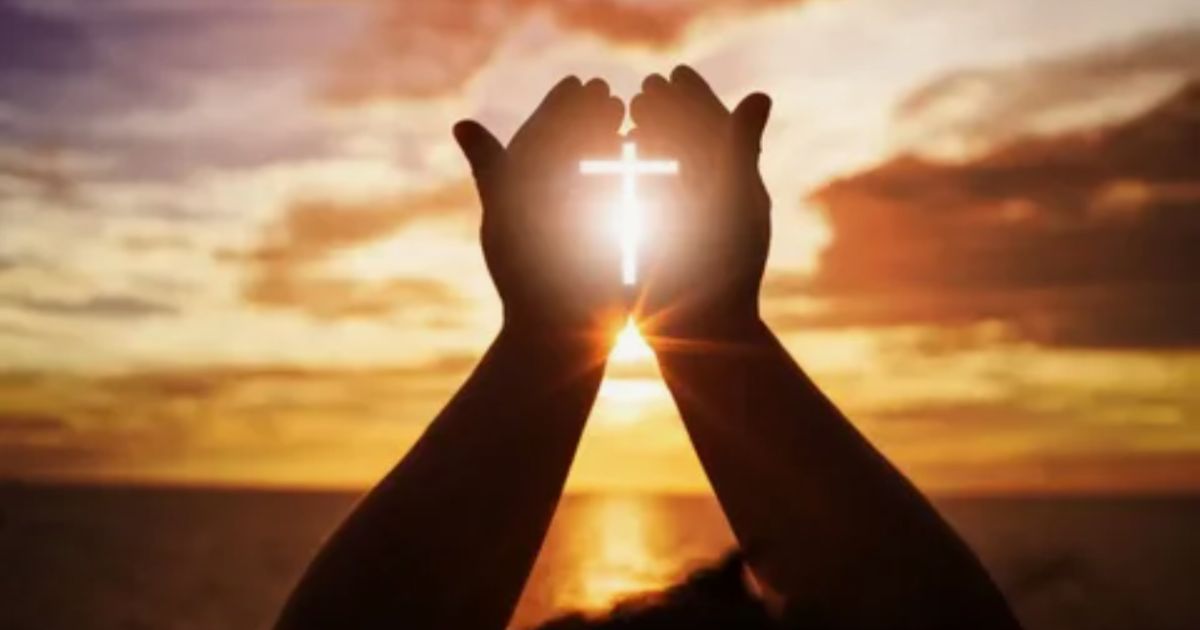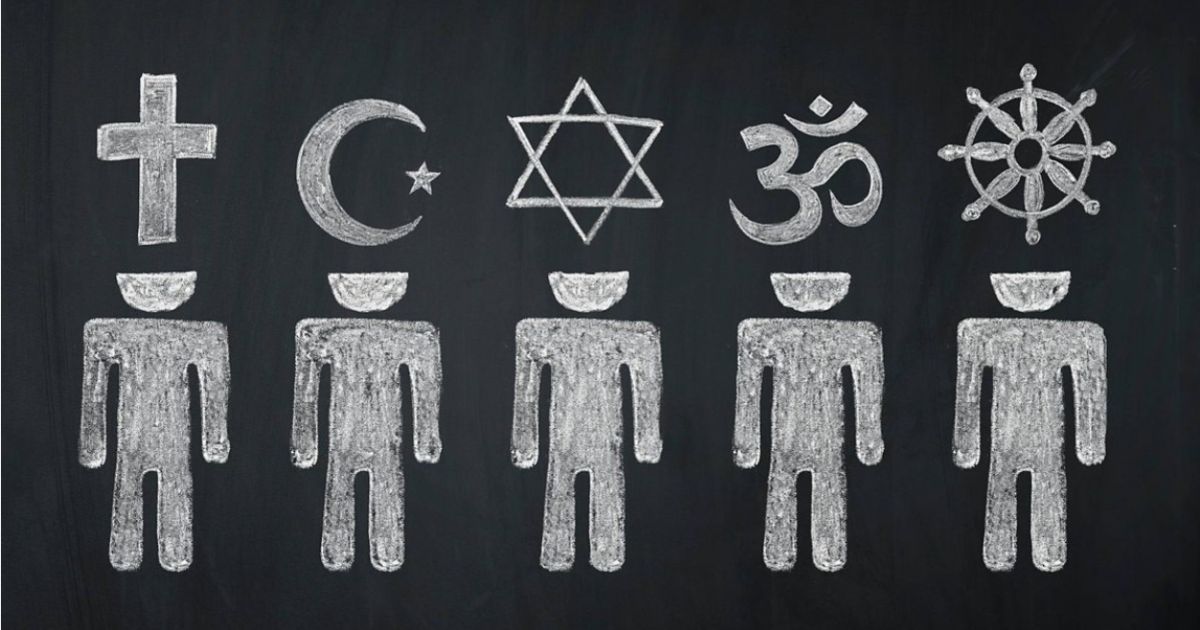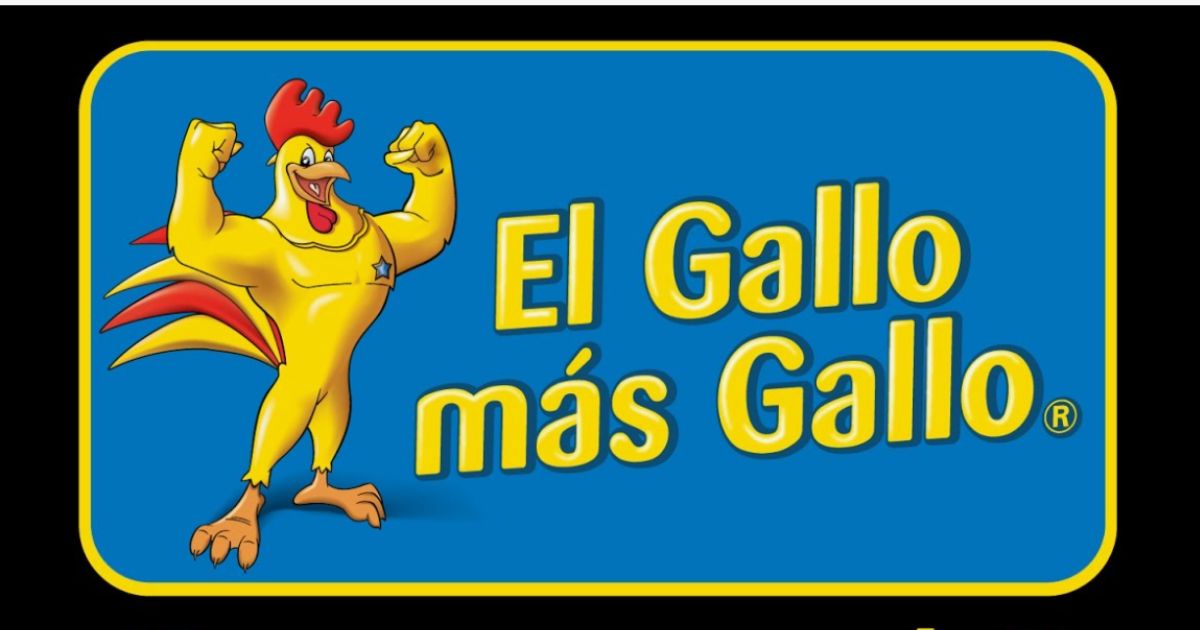Introduction
In cultures around the world, symbols often carry deep spiritual and emotional meaning. One such powerful symbol is El Gallo, or the rooster a figure rich in tradition, folklore, and faith. In this article, titled El Gallo Meaning: What the Rooster Truly Represents in Mexican Life, we explore how the rooster stands tall as a sign of bravery, vigilance, and identity in Mexican heritage. But the spiritual exploration doesn’t end there. Have you ever found yourself asking, what does wyll mean, or pondering the biblical meaning of husband cheating in dreams? Maybe you’ve noticed the number 333 popping up repeatedly and are curious about the 333 biblical meaning love or the biblical meaning of 333 itself. Or perhaps you’re consistently waking at a specific hour and want to understand the biblical meaning of waking up at 4am. This article blends cultural symbolism with biblical insight to help you interpret the messages your spirit may already be receiving.
H2: Symbolism and Cultural Significance of El Gallo
- El gallo stands tall with courage, waking the world with pride and reminding us that light always follows darkness.
- In every sunrise crow, el gallo announces a fresh start, a new chance, and the enduring heartbeat of rural Mexican tradition.
- El gallo symbolizes honor and vigilance, always watching, always ready, a protector of the land and voice of the village soul.
- Roosters aren’t just birds, they’re warriors of the morning, brave enough to sing before the sun rises, even in total darkness.
- The rooster’s crow echoes ancestral wisdom, stands tall, speaks loudly, and never fears the coming of a new day. El Gallo Meaning
- In Mexican homes, the rooster symbolizes resilience rising early, standing proud, and never backing down from the challenges ahead.
- El gallo wears its feathers like armor, a proud guardian of tradition, always facing life head on, never in retreat.
- In Mexican culture, el gallo is the living emblem of masculinity, grit, and the voice of those who won’t be silenced.
- Even in the stillest dawn, el gallo reminds us that something ancient still watches over the land, proud and unyielding. El Gallo Meaning
- With its fiery crest and proud stance, el gallo symbolizes Mexican pride colorful, fierce, and rooted in enduring identity. El Gallo Meaning
- A rooster’s cry is a call to awaken not just the body, but also the heart and spirit of the Mexican soul. El Gallo Meaning
- El gallo stands on rooftops like a sentinel, guarding dreams, traditions, and the ever burning fire of heritage. El Gallo Meaning
- In every proud crow, el gallo carries stories of struggle, survival, and songs passed down through generations of rural life. El Gallo Meaning
- El gallo doesn’t whisper; it sings with strength, courage, and the unbroken rhythm of life that defines Mexican countryside living. El Gallo Meaning
- Just like warriors, roosters don’t run from the dark; they sing into it with fierce certainty that the light will return. El Gallo Meaning
- Roosters teach us to rise early, face fears, and crow boldly no matter how long the night has been. El Gallo Meaning
- The rooster’s spirit is woven into Mexican folklore, a timeless symbol of fierce beginnings and undying ancestral strength.
- El gallo’s crow pierces silence like a promise today is yours, stand firm, and live it fully, with heart and honor. El Gallo Meaning
- Even before the world wakes, the rooster speaks. That’s bravery knowing your voice matters even if no one’s listening yet.
- A rooster is more than feathers and sounds, its culture in motion, identity in feathers, and pride perched on a rooftop.
- Roosters rise with dignity, reminding us that true strength shows up without being asked, early and always loud.
- In many Mexican tales, the rooster signals not just morning but the awakening of truth, justice, and ancestral presence.
- With each crow, el gallo reminds us that even small voices can echo across generations, fields, and entire cultures.
- Roosters don’t follow clocks, they follow instinct, tradition, and the ancient rhythm passed down through rural Mexican bloodlines. El Gallo Meaning
- The rooster’s cry is an anthem of survival piercing, persistent, and proudly rooted in centuries of unshakable cultural grit.
H2: “El Gallo” in Popular Culture

- In popular culture, “El Gallo” represents boldness, always loud, unforgettable, and impossible to ignore, just like a true cultural icon. El Gallo Meaning
- From movie screens to murals, “El Gallo” stands as a proud figure symbolizing fight, voice, and fearless Mexican identity.
- Mexican telenovelas often feature a “Gallo” character: passionate, loud, loyal, and always ready to defend honor and heart.
- In music, “El Gallo” is a voice that rises above noise singing with fire, truth, and the rhythm of Mexican pride.
- Artists paint “El Gallo” not just for beauty, but for bravery, a creature that crowns canvases with courage. El Gallo Meaning
- “El Gallo” is the nickname of legendary fighters, singers, and rebels who dared to stand alone and shout their truth. El Gallo Meaning
- From street art to pop lyrics, the rooster crows with passion, reminding the world that Mexican voices are never silent. El Gallo Meaning
- “El Gallo” in film is never just a bird, it’s a statement, a metaphor, and a badge of cultural resistance.
- Many musicians have been called “El Gallo” for their fearless expression and fiery spirit—singing stories with passion and power.
- Whether onstage or in the street, “El Gallo” becomes a living symbol of power that refuses to be silenced.
- Mexican actors and singers embrace the “Gallo” title as a mark of strength, passion, and unwavering authenticity.
- In comics and cartoons, “El Gallo” often takes on heroic roles: small but mighty, bold but humble, always standing for justice. El Gallo Meaning
- “El Gallo” became a symbol in Chicano movements loud, proud, and painted across walls as a call to cultural pride. El Gallo Meaning
- The rooster in Mexican rap culture speaks truth, spitting fire like crows at dawn, unafraid to voice struggle and spirit. El Gallo Meaning
- Even in modern memes, “El Gallo” remains fierce, funny, edgy, but always full of attitude and power. El Gallo Meaning
- Mexican street performers often channel “El Gallo” expressive, unpredictable, and impossible to ignore once the performance begins.
- “El Gallo” on merchandise—shirts, caps, mugs is more than a trend; it’s a cultural emblem worn with pride. El Gallo Meaning
- In children’s books and stories, the rooster teaches strength, honesty, and how to stand tall even when small. El Gallo Meaning
- T shirts with “El Gallo” printed on them aren’t just fashion, they’re a statement of heritage, pride, and bold personality.
- “El Gallo” in pop songs crows of heartbreak, revenge, or celebration of a bird with emotional punch and passionate rhythm.
- Even in urban dance, the rooster’s spirit lives head held high, steps fierce, always owning its space like a king.
- Popular memes often use “El Gallo” to mock fear because he’s always ready to fight, flirt, or flash that flashy comb.
- “El Gallo” in stand up comedy becomes a punchline and a punch fierce, loud, and unafraid to ruffle feathers.
- You’ll find “El Gallo” graffiti in barrios worldwide, a rooster watching over community pride, courage, and culture.
- Whether in digital art or old school posters, “El Gallo” continues to crow across pop culture—bold, brazen, and deeply rooted in tradition.
H2: El Gallo in Mexican Cuisine
- In Mexican cuisine, el gallo inspires dishes as bold and flavorful as the rooster himself, bursting with heritage and home cooked tradition.
- Every spicy salsa de gallo carries the rooster’s bold spirit, colorful ingredients, and the passionate flavor that defines authentic Mexican cooking.
- Rooster based stews bring depth to rural kitchens, where every bite honors generations of tradition, resilience, and flavorful storytelling through food.
- In humble village kitchens, el gallo becomes nourishment, linking families through recipes passed down with love, laughter, and a dash of fire.
- The name pico de gallo reflects the rooster’s bite sharp, fresh, lively, and impossible to ignore once it touches the tongue.
- Traditional Mexican cuisine uses the rooster not just for food, but as a reminder that flavor comes from strength and story.
- El gallo in the kitchen means spicy, bold, unforgettable like the stories shared over the dinner table with each steaming bite.
- Rural cooks know the rooster brings flavor earned from time, patience, and a respect for every part of the animal.
- Like the rooster’s crow, Mexican food speaks loud and clear bold flavors that wake the senses and stir ancestral pride.
- The phrase salsa de gallo isn’t just a recipe, it’s a call to celebrate color, culture, and the power of spice.
- In kitchens across Mexico, el gallo inspires dishes that awaken memories, mark celebrations, and feed bodies with bold, honest nourishment.
- Just like its namesake, pico de gallo explodes with personality fresh, fierce, and made to spark joy on every plate.
- El gallo appears in old recipes as a symbol of honoring every part, wasting nothing, and cooking with purpose.
- Mexican cuisine views the rooster not only as meat, but as heritage food that connects hearts across generations.
- The rooster’s presence in Mexican food reflects love, work, and the beautiful balance between honoring life and savoring its gifts.
- Pico de gallo wakes the tongue like a crow at dawn sharp, colorful, layered, and full of punchy personality.
- In cooking traditions, el gallo is never just an ingredient, it’s a memory, a ritual, a taste of home.
- Every spicy mouthful of gallo inspired dishes carries the soul of the land, the farmer, the grandmother, and the family table.
- Cooking el gallo takes time and patience just like building culture, it’s a slow flame that yields deep, lasting flavor.
- The rooster in cuisine teaches appreciation that nothing is rushed, nothing is wasted, and everything is honored with seasoning and care.
- In village feasts, el gallo is the centerpiece, nourishing bodies and binding communities through generous, shared tradition.
- The rooster’s bold nature lives in every pepper, herb, and tomato that flavors the salsa bearing his name.
- When el gallo enters the kitchen, he becomes more than food he becomes a story savored through spices and shared plates.
- Mexican dishes featuring roosters reflect the culture’s soul deep, layered, spiced with care, and always proudly served with heart.
- El gallo on the table reminds us that food is celebration, a form of honoring life and those who came before us.
H2: El Gallo in Mexican Wrestling Lucha Libre

- In lucha libre, el gallo represents bravery, flamboyance, and raw strength—charging into the ring like it owns the entire arena.
- Wrestlers named El Gallo channel the rooster’s fearless energy, rising with pride, feathers flying, and hearts ready for battle.
- El gallo enters the ring with boldness, colorful, loud, and unapologetically fierce, refusing to back down from any challenger.
- In lucha libre, the rooster mask symbolizes courage, fighting spirit, and the unshakable will to protect one’s honor and people.
- El gallo wrestlers fight with flare and grit, mimicking the proud strut and defiant cry of their animal inspiration.
- The rooster’s fiery personality is a perfect match for the drama, passion, and flamboyant pride of Mexican wrestling culture.
- Lucha gallos are heroes in feathers, vibrant, loud, tough, and impossible to ignore once they enter the spotlight.
- Fans cheer when el gallo appears more than a wrestler, he’s a symbol of pride, fight, and never ending spirit.
- El gallo in lucha libre is a warrior bird puffed chest, colorful flair, and always ready to crow in victory.
- Wrestlers use rooster personas to show they won’t retreat; they’ll scratch, kick, and crow until the bell rings.
- In the ring, el gallo teaches that being small doesn’t mean weak, it means underestimated and ready to surprise.
- The rooster mask tells fans this fighter’s got guts, glory, and grit enough to win with flair and style.
- Just like on the farm, the rooster in wrestling refuses to be silenced or stepped over he stands tall and proud.
- Lucha libre celebrates el gallo as an icon flamboyant yet fierce, entertaining yet endlessly tough in spirit.
- Every rooster masked wrestler carries a legacy of tradition, strength, and crowd pleasing charisma passed through generations.
- Fans wear rooster masks too because el gallo isn’t just a wrestler, he’s a fearless symbol of Mexican pride.
- The strut, the squawk, the showmanship all embody the rooster’s defiance, making every match feel legendary and unforgettable.
- El gallo in lucha libre doesn’t just fight to win he fights to show the world who he is and where he comes from.
- Like a rooster at dawn, lucha gallos wake the ring with flair, determination, and sharp moves no opponent expects.
- Every rooster wrestler’s entrance is electric colors flash, music blares, and the crowd knows a storm is about to start.
- El gallo characters remind us that loud, proud, and persistent always wins over quiet fear and hesitation.
- Behind every rooster mask is a performer who dares to shine who crows for victory with courage and heritage.
- The rooster style is fast, fiery, and fearless just like real gallos, always charging forward, never looking back.
- In the arena, el gallo becomes more than a fighter he’s folklore in motion, a story with every move.
- Lucha libre gallos teach us to strut our truth, fight for respect, and wear our feathers like a crown.
H2: El Gallo as a Metaphor
- El gallo symbolizes those who rise early, speak boldly, and never let fear silence their truth or passion.
- When life gets dark, be the gallo stand tall, make noise, and believe dawn is worth crowing for.
- To be called a gallo is to carry courage, pride, and the fire to face whatever the world throws at you.
- El gallo is a metaphor for leadership first to rise, first to speak, always standing proud even when alone.
- In stories and sayings, el gallo reminds us to show up loud, confident, and with full heart no matter the crowd.
- Life demands gallo energy, sometimes fiery, fierce, and unafraid to strut through storms with feathers unruffled.
- El gallo speaks before others dare because the brave don’t wait for light to shine before they believe in it.
- Like a rooster’s crow, your voice matters most when it rises in silence and announces hope for others.
- Being a gallo isn’t about being loud it’s about knowing when to raise your voice for what truly matters.
- El gallo metaphorically represents awakening within ourselves, within our communities, and within the soul longing to be heard.
- When someone calls you a gallo, they mean you don’t back down, and you fight with both heart and pride.
- Roosters don’t whisper their truth they declare it, proudly and without apology, just like those who walk bravely in purpose.
- El gallo stands as a symbol of strength wrapped in style, proving even the smallest can carry the loudest message.
- You don’t need a stage to be a gallo you just need conviction to speak up and stand strong.
- The world needs more gallos people unafraid to ruffle feathers when protecting something worth fighting for.
- The rooster teaches that showing up first, even before light, makes you a beacon for others still afraid of the dark.
- In metaphor, el gallo calls us to action to wake up, speak out, and strut boldly through life.
- El gallo is courage in color, volume in silence, and movement when others stand still with doubt.
- When you’re called a gallo, you’re being honored as someone with backbone, flair, and an unwavering will to rise.
- El gallo means never waiting for applause just doing what’s right with pride, purpose, and unstoppable energy.
- A metaphorical gallo leads by example showing that bravery is loud, loyal, and always ready to defend its people.
- Gallo energy isn’t arrogance it’s confidence earned through challenges, shown through pride, and sealed with fierce authenticity.
- To live like el gallo is to move with intention, speak with strength, and never let fear dull your shine.
- In metaphors, el gallo is not just a rooster, it’s the unstoppable will to rise, lead, and live boldly.
- El gallo reminds us that standing out isn’t a flaw, it’s a calling to wake others up with purpose and pride.
H2: El Gallo in Religion and Spirituality

- El gallo represents spiritual awakening; his crow breaks silence and calls the soul to rise, reflect, and renew with the morning light.
- In many traditions, the rooster’s crow signals divine timing, a sacred reminder that each day begins with new mercy and purpose.
- The gallo’s call is a spiritual alarm urging hearts to awaken, repent, and live with more courage, truth, and light.
- El gallo symbolizes resurrection the first to announce dawn after darkness, echoing hope, rebirth, and the sacred promise of second chances.
- In faith stories, the rooster often speaks of truth its crow reveals honesty, even when we’d rather hide behind silence.
- Spiritually, el gallo reminds us that even mistakes can be turning points when we choose to wake up and change.
- Many see the rooster as a holy messenger announcing not just daylight, but divine opportunity and fresh beginnings from above.
- The rooster’s crow can symbolize conviction reminding the spirit to rise, speak truth, and walk faithfully, even when it’s hard.
- In biblical stories, the gallo’s crow signaled both failure and redemption a powerful moment of awakening for the human heart.
- El gallo calls us to awareness not just of time, but of self, conscience, and the divine within daily life.
- The rooster stands as a spiritual gatekeeper present at the threshold between night and day, ignorance and understanding.
- Monasteries once used roosters to mark prayer times, reminding the faithful to live each moment with reverence and readiness.
- El gallo is nature’s prophet declaring each morning that creation still sings, and that life continues with promise.
- In religious folklore, el gallo often represents the soul’s call to truth, courage, and the light of higher awareness.
- The rooster teaches us to listen not just with ears, but with spirit, to hear the deeper meanings behind life’s daily signs.
- El gallo in spiritual practice reminds us that waking up early isn’t just physical it’s emotional, mental, and divine awareness.
- In spiritual tales, the rooster represents vigilance always watching, ready to cry out against spiritual danger or deception.
- His crow breaks illusion forcing us to face the truth we try to hide, and encouraging us to walk forward in grace.
- The rooster has long stood as a symbol of spiritual discipline rising early, alert, and aligned with divine timing.
- El gallo reminds us that light always follows darkness faith that dawns even after the longest spiritual night.
- In sacred rituals, the rooster is seen as a bridge between the earthly and divine its crow a voice that connects worlds.
- The gallo encourages spiritual confidence stand tall in your beliefs, crow your truth, and trust the light will answer.
- El gallo tells us that even when we fall, there’s a new dawn coming to help us rise again with clarity.
- The rooster’s voice carries sacred weight a call not just to wake, but to live with spiritual intention and integrity.
- In spirituality, el gallo is the daily invitation to rise in faith, shake off shadows, and embrace the promise of a new beginning.
H2: The Role of El Gallo in Festivals and Traditions

- In Mexican festivals, el gallo symbolizes joy, pride, and energy always at the center of music, dance, and celebration.
- El gallo leads traditional parades with flair its image crowning banners, costumes, and decorations full of color and cultural meaning.
- During morning festivals, the rooster’s crow marks the start of joy calling everyone to awaken their spirit and join the celebration.
- El gallo plays a ceremonial role in village rituals representing strength, fertility, and the vibrant pulse of community life.
- In many rural towns, rooster crowing contests are held during festivals honoring tradition, pride, and agricultural heritage.
- El gallo is often painted on papel picado and masks bright, bold, and symbolizing festive courage.
- The rooster appears in dances and songs, his cry echoing through tradition as a symbol of life, energy, and cultural continuity.
- During annual fiestas, el gallo may be honored in games, chants, and parades—celebrating its place in daily and spiritual life.
- At dawn rituals, el gallo’s crow is played on loudspeakers welcoming sunlight and blessing the start of sacred or community ceremonies.
- El gallo is proudly featured in traditional costumes, his feathers and stance mimicked to show strength and cultural identity.
- In rooster themed processions, the gallo leads the way reminding all that heritage walks proudly and never quietly.
- Children dress as roosters in school parades learning early that el gallo is a symbol of pride, celebration, and tradition.
- El gallo’s presence in festivals teaches that joy is strongest when shared loudly and with full heart.
- In music filled fiestas, gallo figures are danced around like blessings colorful and filled with rhythm.
- El gallo is honored in folk songs, his crow woven into verses that speak of land, love, and lasting customs.
- Firework displays shaped like roosters light the skies during local festivals roaring color and power into the night.
- Rooster imagery on altars reminds families to wake gratefully and celebrate ancestors during Day of the Dead ceremonies.
- El gallo is often gifted as a toy or decoration during celebrations symbols of good fortune and future prosperity.
- At rural festivals, actual roosters are paraded in baskets blessing crops, children, and newlyweds with strength and fertility.
- The rooster appears in traditional storytelling circles crowed about as a brave, noble creature who brings laughter and wisdom.
- El gallo teaches that every tradition must be loud with meaning, bright with color, and shared with open hearted celebration.
- The rooster’s image in handmade crafts woven, carved, painted tells stories of celebration, resilience, and cultural pride.
- Every fiesta where el gallo appears reminds us that celebration is also remembrance of the land, the ancestors, and the spirit within.
- In Mexican traditions, el gallo is not just a symbol, it’s an honored guest at every cultural gathering.
- Wherever el gallo is celebrated, tradition lives on, crowing with energy, beauty, and a legacy too powerful to fade.
H2: Global Perspectives on El Gallo

- Around the world, el gallo represents bravery crowded about in folktales, myths, and stories that honor boldness and awakening.
- In France, the rooster symbolizes national pride standing tall on coins and monuments as a figure of strength and resilience.
- Across Asia, the rooster brings fortune believed to ward off evil and attract prosperity with every loud, proud crow.
- In African traditions, the rooster announces protection, its voice believed to guard villages and homes from dark spiritual forces.
- In Greek mythology, the rooster greeted the sun god each morning earning its place as a divine herald of light.
- Chinese culture honors the rooster as a zodiac symbol marking personalities full of honesty, courage, and determined spirit.
- El gallo is respected in Caribbean religions used in ceremonies as a spiritual connector between ancestors and the living.
- In European farms, roosters were protectors early risers that woke entire villages with natural timekeeping and vocal strength.
- Globally, the rooster is known as the voice of truth calling attention to what others may fear to say out loud.
- In Latin America beyond Mexico, the rooster appears in stories and songs as a fighter who never backs down.
- El gallo’s crow is universal its sound a shared symbol of renewal, vigilance, and the beginning of something meaningful.
- In Vietnamese legends, roosters are associated with sunlight and justice fighting back against the forces of darkness with pride.
- In Italy, rooster shaped ceramics are displayed in homes for good luck, happiness, and a constant reminder to live loudly.
- In rural India, roosters symbolize strength and sacrifice appearing in sacred stories of warriors and protectors of the land.
- Rooster weather vanes on rooftops across cultures symbolize direction, guidance, and a grounded connection to the spiritual and natural worlds.
- El gallo appears in universal dreams as a sign to wake up spiritually and embrace courage in the face of fear.
- In global street art, rooster murals represent protest bold images painted to inspire resistance, voice, and revolution.
- Across continents, roosters are raised for crowing competitions loud champions of rural pride, identity, and generational skill.
- The rooster is embroidered into global fabrics stitching strength and meaning into cultural identity and artistic expression.
- Roosters in global poetry speak of awakening metaphors for time, change, and the fire of inner truth rising with purpose.
- El gallo is a cross cultural figure of alarm and authority his cry recognized universally as a call to rise and respond.
- The rooster appears in world religions as both sacrifice and savior connecting the earth to heavens through symbolic ritual.
- From Haitian Vodou to Portuguese folklore, the rooster’s story changes but always represents pride, power, and voice.
- In international celebrations, rooster symbols appear on clothing, pottery, and flags marking pride in voice and cultural heritage.
- Globally, el gallo continues to crow reminding us that no matter where we are, truth must be heard and spirit must rise.
Whether through ancient folklore, spiritual dreams, or divine numbers, the universe and faith often speak in symbols. As we’ve explored in El Gallo Meaning: What the Rooster Truly Represented in Mexican Life, the rooster is more than just a morning call it’s a powerful emblem of strength, pride, and cultural identity. At the same time, modern questions like what does wyll mean, or dreams like the biblical meaning of husband cheating in dreams, open doors to deeper personal reflection. The repeated appearance of numbers brings divine messages like the biblical meaning of 333 and the 333 biblical meaning love, both pointing to spiritual alignment and love. And waking up at odd hours might just be more than coincidence consider the biblical meaning of waking up at 4am as a call to prayer or awareness. In all these signs, there’s one common thread: a deeper meaning waiting for those who choose to seek it.

Professional quotes researcher with 5+ years of experience. Expert in content writing, specializing in meaningful, viral, and SEO-optimized quotes content.
With 5 years of hands-on experience in quotes curation and expert-level content writing skills, I craft impactful, reader-friendly, and SEO-focused content that resonates.
Experienced quotes curator and expert content writer with 5+ years in the field. I create powerful, share-worthy, and emotionally rich content that drives engagement.
Agar asap chain to inmix se Kisi koi personalize bhp kart skate hood, jays apace website, niche ya tone (formal/informal) key hashab se.

